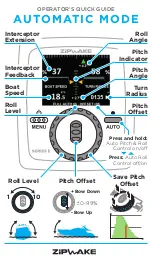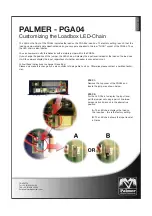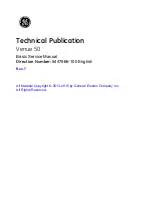
Resonance
If the output of a filter is fed back to its input, reso-
nance occurs, which is a sinusoidal oscillation near the
cutoff frequency (see fig. 4.6). The RESO knob con-
trols the depth of this effect. At lower settings, reso-
nance can be used to add presence to a sound. Using
higher settings, the sinusoidal oscillation gets strong
enough to use the filter in a similar fashion as an os-
cillator. This property can be useful to create special
effect sounds such as laser guns, electronic bass drums
etc.
Frequency
Magnitude
Cutoff frequency
Resonance
Figure 4.6: Response of a resonant low-pass filter.
Drive
The DRIVE knob sets the input gain of the filter.
When using strong resonance, drive controls the mix
between the filtered signal and the resonant peak. The
lower the drive setting, the stronger the resonant peak.
When using any of the transistor ladder filter models
(see below), drive will additionally saturate the signal,
regardless of resonance.
Keytrack
The KTRK knob determines how much the cutoff fre-
quency is affected by the MIDI key number. Set to
zero, all notes share the very same cutoff frequency as
specified by the
CUTOFF
parameter. Nonzero val-
ues move the cutoff according to the key pressed, with
higher keys corresponding to higher cutoff frequencies.
At low settings, this parameter is useful to create sub-
tle timbre variations when different notes are played.
At higher settings, key tracking can be used to simu-
late the properties of acoustic instruments that have a
varying timbre dependent on the note played.
4.7.2 Filter Models
Dune 2 features a number of different filter models to
choose from. All filters except the legacy Dune 1 filters
are zero-delay feedback designs, which more closely re-
semble the response of analog filters.
Furthermore,
most filters can reach self-oscillation when turning up
the resonance.
31
DUNE 2 User’s Manual
Содержание DUNE 2
Страница 1: ...User s Manual...
















































